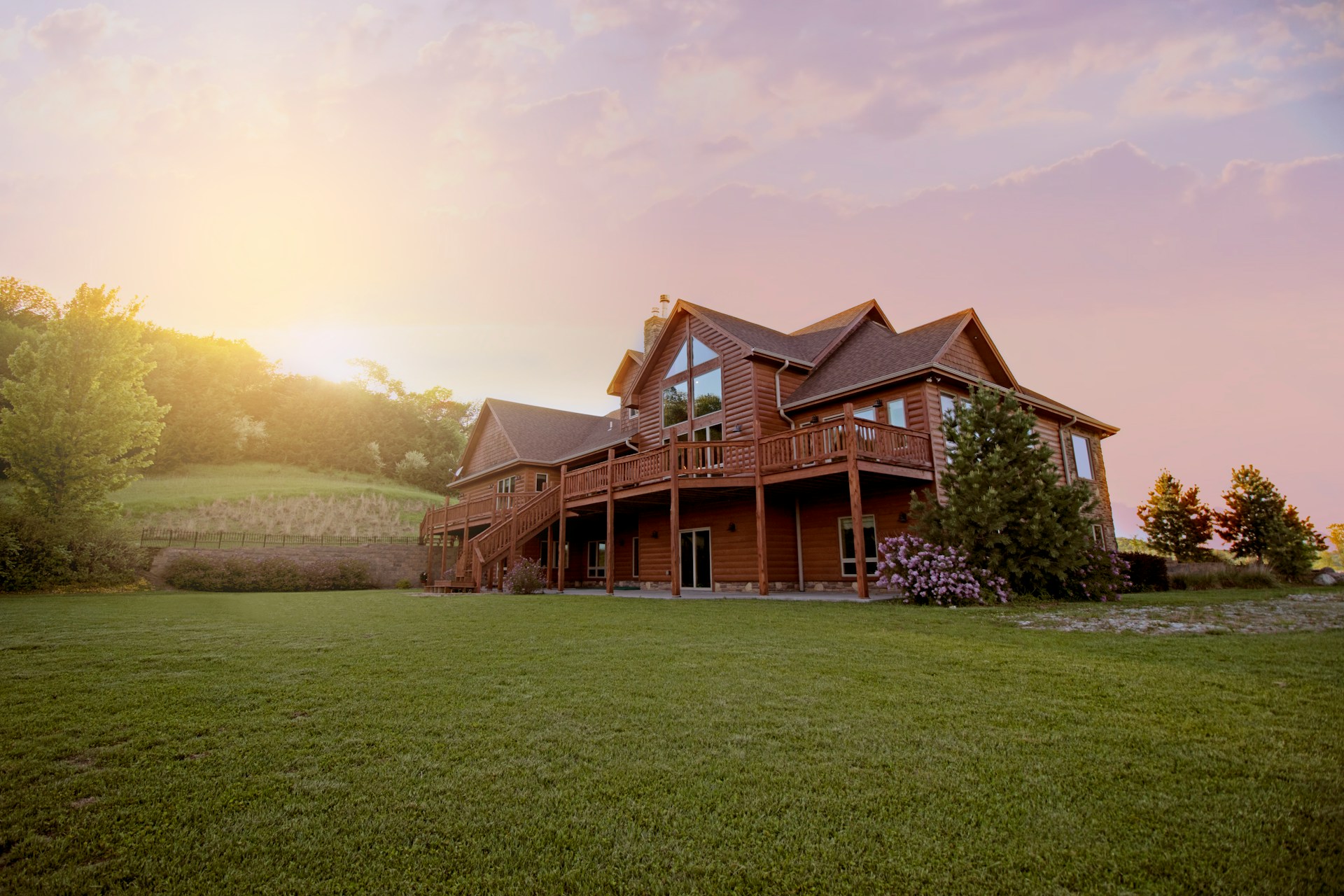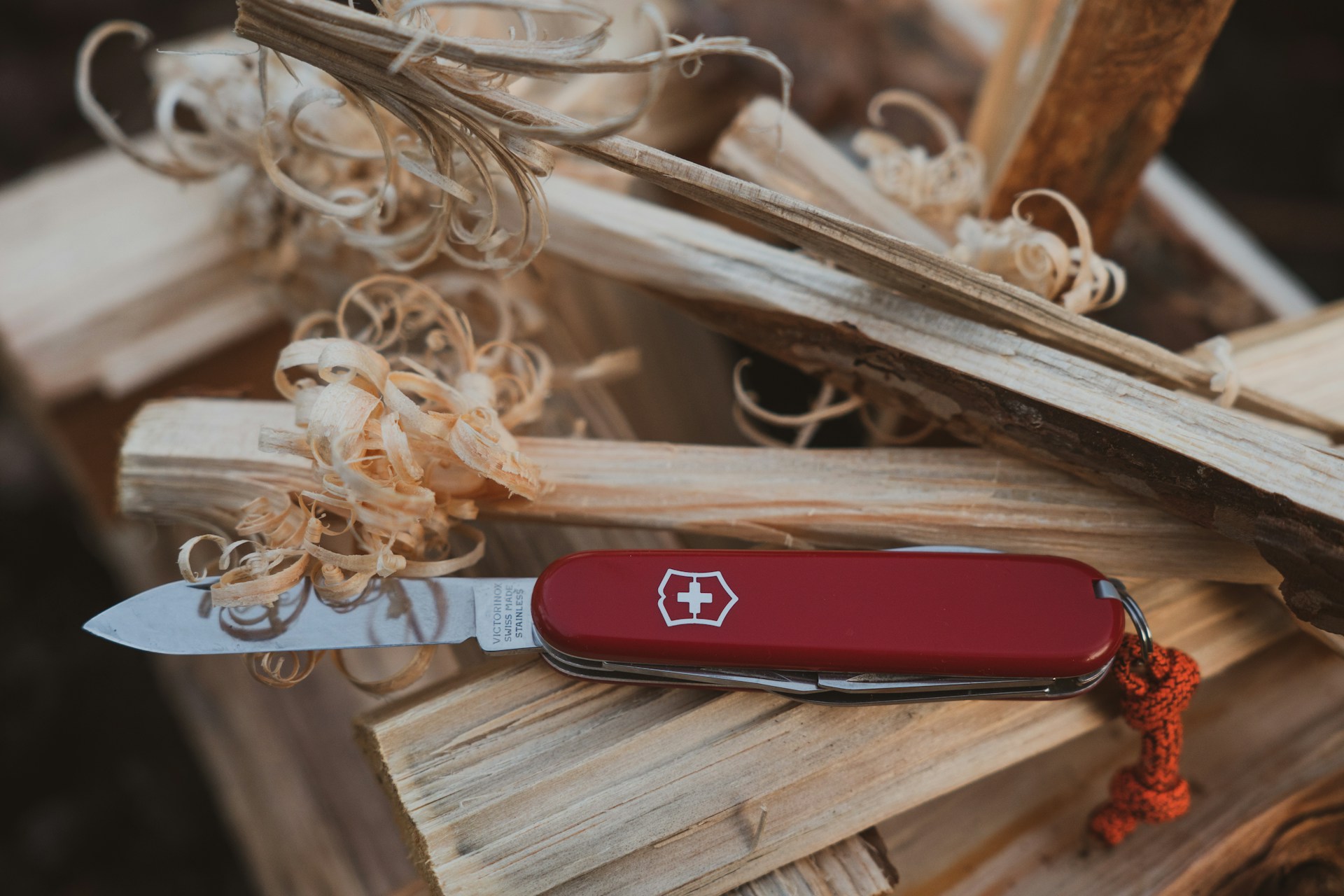Tactical
Brave Grandmother Defends Home and Grandchild from Intruder

In the quiet evening hours of a regular Friday night in New Mexico, a grandmother’s peaceful time with her 4-year-old grandson was interrupted by an unexpected and direful situation. An auto theft suspect, on the run from the law, had found his way into her home.
The Albuquerque police had been hot on the heels of a stolen truck they tried to stop near Central and Cypress around 8 p.m. According to details shared with the Albuquerque Journal, the authorities had used spike strips to punch the vehicle’s tires, causing the truck to limp “on its rims” and eventually crash into a curb near Candelaria and Rio Grande NW.
The driver, however, managed to escape and slipped into the neighborhood, prompting police to set up a perimeter to search the area. Meanwhile, inside a nearby home, a grandmother, whose identity has been withheld for her protection, sensed an intruder in her house.
“She heard someone inside her home,” the Albuquerque Journal reported, based on the criminal complaint filed in Metropolitan Court.
The woman, understandably startled and concerned for her grandson, confronted the intruder. He “appeared to be angry” and demanded her keys. Although she considered arming herself, she noted later to the police that she was unsure if she’d have time to utilize the weapon should the intruder also display a firearm.
According to the report, she led the intruder to a “bowl of keys” in her kitchen. The man hastily grabbed a number of keys and exited the scene. However, the danger was far from over.
The grandmother, showing quick thinking and courage, rushed to secure a firearm. She moved her grandson into a bedroom, hoping to shield him from the imminent danger. Yet, in a heart-stopping moment, she found the intruder back in her hallway. He was “demanding more keys,” the Albuquerque Journal cited from the complaint.
The situation was escalating rapidly. “She pointed the gun at the intruder and told him to get out,” but the man, defiant and desperate, began to approach her instead. The grandmother, fearing for her life and that of her grandchild, made the difficult choice to protect herself, shooting the intruder once.
Later, in her recount of the ordeal to the police, she shared that the shot man fell to the ground and began “crawling through the halls asking for water.” Showing remarkable restraint and humanity, the woman “put pressure on his wound until police arrived,” as per the Journal’s report.
Following the incident, the woman dialed 911 around 9:30 p.m. The officers arrived on the scene and detained the suspect, later identified as 32-year-old Joseph Rivera. The brave grandmother gave the officers the gun she had used.
According to the Albuquerque Journal, Rivera has been charged with burglary, attempted burglary, and auto theft. He will be transferred to jail once he receives clearance from the hospital. As terrifying as the situation was, the grandmother’s swift thinking and determination ensured her and her grandchild’s safety, providing a stark reminder of the importance of being prepared for any situation.
Let us know what you think, please share your thoughts in the comments below.

Preparedness
5 Ways to Make Your Home Safer Immediately

A safe home does not require expensive upgrades or complicated systems. Many of the most effective changes are simple steps you can take right now. Whether you are preparing for a storm, a power outage, or everyday security issues, knowing how to strengthen your home quickly can give you immediate peace of mind. These five actions take only minutes, but each one cuts down real risks and helps protect the people and belongings you care about.
1. Improve Your Exterior Lighting
Poor lighting makes it easier for accidents and break-ins to happen. Adding bright bulbs to porches, pathways, and driveways is one of the fastest ways to reduce danger. Motion-sensor lights are inexpensive and use very little electricity. Good lighting keeps you from tripping in the dark and makes your home less inviting to anyone with bad intentions.
2. Check and Strengthen Your Locks
Many people assume their locks are secure until they actually test them. Walk through your home and check every door and window. Make sure each one closes fully and locks tightly. If any lock feels loose, replace it or tighten the screws. Installing a simple deadbolt on exterior doors adds a major layer of protection. Even a small upgrade can stop forced entry attempts.
3. Remove Common Indoor Hazards
Home accidents often start with everyday items that people overlook. Clear walkways, secure loose rugs, organize power cords, and remove anything that blocks exits. Check that smoke alarms and carbon monoxide detectors work and have fresh batteries. A few minutes of hazard removal can prevent falls, fires, or smoke-related emergencies.
4. Create a Simple Emergency Plan
During a crisis, confusion and panic cause more harm than the event itself. Make a basic plan that covers where you will meet, how you will communicate, and which items you would grab in an evacuation. Keep a small emergency kit in an easy-to-reach spot. A clear plan allows you to act quickly instead of scrambling in the moment.
5. Reinforce Entry Points
Windows and doors are the first places that fail during break-ins and strong storms. Adding simple reinforcements helps keep your home secure. Install window locks or wooden rods to prevent sliding windows from opening. Secure your garage door by engaging the manual lock. Place a doorstop or wedge behind vulnerable doors for added strength. Small changes can significantly increase resistance during emergencies.
Final Thoughts
Home safety starts with awareness and small improvements that add up quickly. By increasing light, checking locks, removing hazards, planning ahead, and reinforcing entry points, you create a safer environment for both everyday life and unexpected emergencies. You do not need expensive systems to protect your home. You just need a few smart steps and the habit of staying prepared.
Tactical
5 Survival Skills That Put You in Control

When life gets unpredictable, the most valuable tool you can carry isn’t a gadget or a stockpile — it’s a skill. The right skills turn fear into focus and confusion into action. They help you stay steady when others panic, and they give you choices when things start to fall apart.
Here are five survival skills that genuinely put you back in control, no matter what kind of crisis you face.
1. Knowing How to Stay Warm the Smart Way
Survival isn’t always about the cold — it’s about losing heat faster than you can replace it.
Most people instinctively reach for more clothing, but the real skill is understanding heat management:
- Layer light clothing instead of heavy pieces
- Keep your core warm above everything else
- Block wind before adding warmth
- Stay dry — moisture is the real enemy
Once you understand how your body loses heat, you’re no longer at the mercy of the weather. You can stay warm with less gear, fewer resources, and far more confidence.
2. The Ability to Find or Purify Water Anywhere
Water goes from “background convenience” to “critical priority” very quickly in a crisis.
Knowing how to locate water — and make it safe — puts you in control in ways most people overlook.
Useful methods include:
- Collecting rainwater safely
- Using common household items (coffee filters, bleach, boiling)
- Identifying safe natural sources
- Avoiding contaminated runoff
Even simple techniques can transform questionable water into something drinkable. Skill beats equipment here.
3. Staying Calm When Everyone Else is Losing Their Head
The most powerful survival skill isn’t physical — it’s mental.
Panic narrows your vision. Calm thinking widens your options.
People who stay calm can:
- Communicate clearly
- Make better decisions
- Notice escape routes others miss
- Work through problems step by step
This is the skill that makes every other skill work. You don’t need superhuman nerves — just practice, breathing control, and a habit of slowing down before you react.
4. Basic First Aid You Can Use Immediately
You don’t need to be a medic to save a life.
A handful of basic skills — stopping bleeding, cooling burns, spotting infection, supporting a sprain — can change the outcome of an emergency dramatically.
Most people freeze because they’re unsure what to do.
Learning even a few practical steps puts you in control when someone gets hurt and professional help is still far away.
5. Knowing How to Create Light, Signal, or Get Attention
Darkness is disorienting. Silence is even worse.
If you can create light or send a signal, you regain control over your surroundings.
A few valuable abilities include:
- Using reflective surfaces to signal
- Knowing how to start a safe fire
- Making noise that carries distance
- Using everyday items (flashlights, whistles, phones) efficiently
Light and sound turn you from “isolated” to “visible,” and visibility is power in any crisis.
Final Thought
Control doesn’t come from luck. It comes from preparation you can use anywhere — skills that stay with you whether you’re at home, on the road, or caught in a situation you never expected.
When you understand how to think clearly, stay warm, find water, treat injuries, and get attention when needed, you’re not just surviving… you’re directing the moment.
Preparedness
5 Things in Your Home That Can Help You Create a Safe Escape Plan

Not every dangerous moment involves a direct confrontation. Sometimes the real threat is confusion, panic, or not knowing what to grab when you need to react fast. Your home already has simple items that can help you stay oriented, stay calm, and get out safely if something goes wrong — whether it’s a break-in, a fire, or any unexpected emergency.
Here are five everyday things that can quietly strengthen your safety plan without feeling like “preparedness gear.”
1. A Pair of Shoes You Can Slip On Fast
This sounds almost too simple, but it’s one of the most overlooked safety tools in any house.
If you need to leave in a hurry — even just to get outside and call for help — you don’t want to waste time with laces or walk barefoot over broken glass, cold pavement, or debris. Keep a sturdy slip-on pair by your bed. It’s a small habit that can make a huge difference.
2. A Charged Old Phone
Even a disconnected phone can still call 911.
If you have an old smartphone in a drawer, charge it and leave it in your bedroom or a hidden spot. During an emergency, your main phone might be out of reach, dead, or taken. Having a backup gives you a second chance to call for help.
3. A Mini Flashlight on Your Nightstand
Power outages often happen at the worst moments. A small flashlight helps you see where you’re stepping, find your keys, or check on a noise without stumbling around in the dark. It also helps you avoid tripping hazards if you need to move quickly. Choose a compact LED one and keep it in the same spot every night.
4. A Loud Whistle
If you can’t shout, or your voice doesn’t carry far, a whistle can be your lifeline.
It cuts through walls, hallways, and even outdoor distance better than yelling. Whether you’re trying to alert a neighbor, scare off an intruder, or signal for help during a medical emergency, a whistle is one of the most underrated tools for personal safety.
5. A Written “Quick Escape Plan”
You don’t need blueprints — just a simple index card taped inside a drawer or next to your nightstand.
Write down:
• Your fastest exit routes
• Where your keys always stay
• Where your phone and flashlight stay
• A reminder to put on shoes
• Who to call first
In a panic, people forget steps. A small card keeps your mind focused and your actions clear.
Final Thought
Self-protection starts long before danger shows up. It’s not about preparing for a fight — it’s about preparing to move, think, and react in a way that keeps you safe.
-

 Tactical2 years ago
Tactical2 years ago70-Year-Old Fends Off Intruder with Lead-Powered Message
-

 Tactical2 years ago
Tactical2 years agoVape Shop Employee Confronts Armed Crooks, Sends Them Running
-

 Preparedness1 year ago
Preparedness1 year agoEx-Ballerina’s Guilty Verdict Sends Tremors Through Gun-Owner Community
-

 Off The Grid2 months ago
Off The Grid2 months ago10 Foods That Could Save Your Life When Grocery Shelves Are Empty
-

 Preparedness1 month ago
Preparedness1 month ago5 Things You Should Always Carry During a Winter Storm
-

 Preparedness1 year ago
Preparedness1 year agoGood Samaritan Saves Trooper in Harrowing Interstate Confrontation
-

 Preparedness6 months ago
Preparedness6 months agoHow Much Gasoline Should You Store for Emergencies?
-

 Nature and Wildlife2 months ago
Nature and Wildlife2 months ago10 Survival Skills You Should Learn Before You Need Them
Mitch Watson
April 26, 2024 at 12:37 pm
It’s as simple as this…ANYBODY that enters my house w/o my permission and unannounced instantly qualifies him/her self to get blasted by any number of my weapons…only possible regret wud be to have to clean up the mess where they fall ! Any Questions !
Gerald Hallman
April 26, 2024 at 12:41 pm
If the intruder is agitated or aggressive, and doesn’t respond to notifications that you are armed and you are in fear for your life and the life of others in your home, then that limits your options. As a retired nurse and paramedic, I have seen people in a heightened and agitated state and unless you are in good physical shape confronting an intruder could cause you more harm.
Sarah
April 26, 2024 at 1:48 pm
The grandmother was in her rights to protect herself and her grandson. If it was the other way around the criminal I’m sure would not have hesitated to hurt the grandmother and/or her grandson.
Charley C.
April 26, 2024 at 2:27 pm
I applaud her thinking and her bravery . Her Garden angle was with her that night .
May God watch over her and her family always .Amen
George Kilmetz
April 27, 2024 at 2:13 am
Should have finished him off